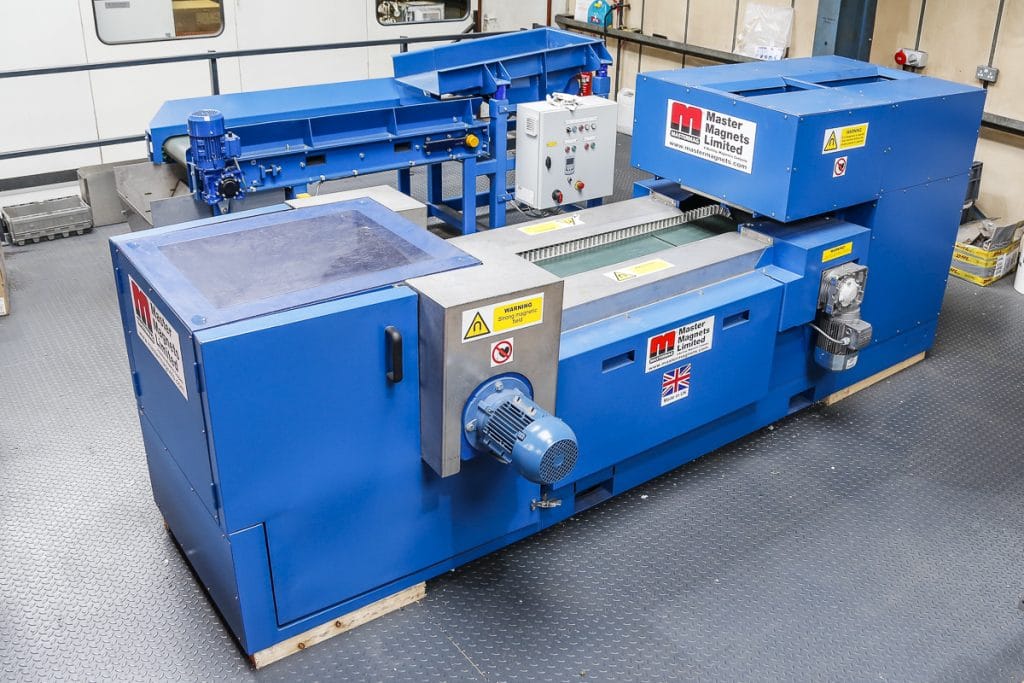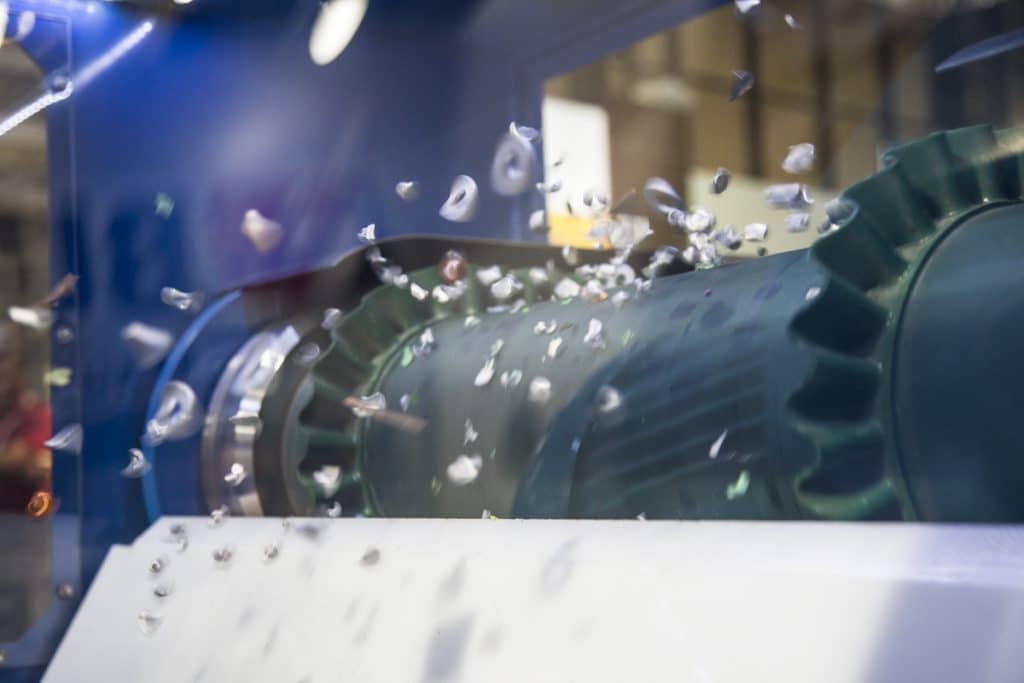Lab Equipment For University of Birmingham
By Paul Fears | 11 September 2019
The University of Birmingham has purchased a laboratory-sized Eddy Current Separator and Drum Magnet modular system from Bunting-Redditch. Students and professors undertaking research at the university will use the new Metal Separation Module to determine the recovery and recycling capabilities of a wide range of materials.

The laboratory Metal Separation Module comprises of a Vibratory Feeder, Drum Magnet and Eddy Current Separator. The Vibratory Feeder ensures an even feed of material feeding onto the high strength Drum Magnet. The Drum Magnet attracts and removes strongly and weakly magnetic materials. The remaining non-magnetic fraction falls onto the belt of the Eddy Current Separator.
An Eddy Current Separator comprises of a conveyor revolving around two-pulleys. The head pulley has a non-metallic shell housing a high strength Neodymium Rare Earth magnetic rotor. The magnetic rotor is spinning at a significantly higher speed than the non-metallic outer shell.

In operation, conveyed non-magnetic material travels into the separation zone on the head pulley. In the separation zone is an alternating magnetic field that passes through any non-ferrous metal particles. In accordance with Fleming’s Left Hand Rule, current-carrying conductive particles (e.g. aluminium) inside a changing magnetic field are induced by an electrical current. This current produces a magnetic field. This magnetic field reacts with the rapidly alternating magnetic field of the rotor causing the particle to spin and project away from the rotor. This changes the trajectory of the particle away from that of unaffected non-metallic material, enabling a separation.
Eddy Current Separator model 30E
The design of the laboratory-sized Eddy Current Separator model 30E enables easy adjustment of key performance criteria. This includes a measured adjustable splitter and variable conveyor belt and magnetic rotor speed through an inverter.
The Model 30E features a magnetic rotor positioned eccentrically to the outer shell. This reduces the potential of damage from ferrous metals.
The overall length of the Laboratory Metal Separation Module is just over 4 metres with a maximum width of 1.4 metres at the widest point (by the motor driving the magnetic rotor). The overall weight is approximately 1,500 kgs.
“We have a long-history of working with the University of Birmingham,” explained Adrian Coleman, the General Manager of Bunting-Redditch. “Allowing students and research professors access to the latest technology is vitally important. Reclaiming, recycling, and reusing our waste materials is one of the most important issues of modern times. The research undertaken by Universities will identify new ways to successfully manage our waste, which will benefit the whole planet.”
For additional information on the Eddy Current Separator or any other equipment designed for laboratories and research facilities, please contact us on:
Email: press@buntingeurope.com
Telephone: +44 (0) 1527 65858
All photographs taken by Paul Fears Photography
Follow us on social media




